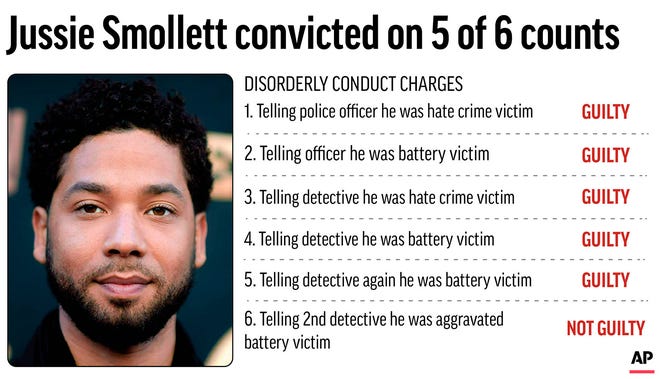
The Centers for Disease Control and Prevention have now classified the delta variant of the coronavirus, first discovered in India, as a “variant of "concern" as it now accounts for 10% of cases in the U.S.
The classification comes as the variant has increased transmissibility and potential reduction in post-vaccine immunity. The variant previously raged in India and is currently making its way through the U.K., prompting a delay in reopening.
"It's doubling every two weeks," former Food and Drug Administration Commissioner Dr. Scott Gottlieb said on "Face the Nation". "That doesn't mean that we're going to see a sharp uptick in infections, but it does mean that this is going to take over," he added. "And I think the risk is really to the fall that this could spike a new epidemic heading into the fall."
Both the Pfizer and Moderna vaccines are about 88% effective against the delta variant after two shots, according to research. Research indicates that the Johnson & Johnson vaccine is less effective, but more information is needed.
The updated CDC data came as U.S. surpassed 600,000 COVID-19 deaths on Tuesday, a stark reminder of the pandemic's enduring toll even as the nation continues to take steps toward normalcy. The current seven-day average of about 430 deaths a day is less than one-seventh of the 3,300 daily fatalities during the ghastly January peak.
"The light at the end of the tunnel is in sight, but it doesn’t bring back any of those lives or bring solace to the grieving families," said Dr. Steven Woolf, director emeritus of the Center on Society and Health at Virginia Commonwealth University. "My other worry is that, for too many Americans and politicians, the rush for life to 'get back to normal will lead to complacency about the problems that made us vulnerable to COVID in the first place."
Also in the news:
►The New York Yankees will resume 100% capacity at Yankee Stadium starting with Friday night’s series opener against the Oakland Athletics.
► The U.S. Department of Labor’s Occupational Safety and Health Administration has cited Rhode Island Dr. Anthony G. Farina Jr. for failing to protect workers at his medical practices in North Providence and West Greenwich from exposure to the coronavirus — and for failing to implement proper safety measures after six employees tested positive for the virus in the fall of 2020.
►Royal Caribbean International is postponing the inaugural sailings of its newest cruise ship after eight crew members received positive COVID-19 test results during routine testing.
►Arizona Gov. Doug Ducey issued an executive order Tuesday that bars all public universities and community colleges from requiring a COVID-19 vaccination.
►The Kaiser Family Foundation’s ongoing vaccine monitor shows 20% of adults don’t intend to get the vaccine unless required, and 12% are on a wait-and-see mode. That’s nearly one-third of the country’s adults expressing reluctance.
?Today's numbers: The U.S. has more than 33.4 million confirmed coronavirus cases and at least 600,200 deaths, according to Johns Hopkins University data. The global totals: More than 176.57 million cases and more than 3.81 million deaths. More than 145.76 million Americans have been fully vaccinated — 43.9% of the population, according to the CDC.
?What we're reading: Effective COVID-19 vaccines were developed in under a year. But a half-century after the country declared war on cancer, and 40 years after the first reported case of HIV/AIDS, there remains no way to prevent either disease or many more. Read the full story.
Keep refreshing this page for the latest updates. Want more? Sign up for our Coronavirus Watch newsletter for updates to your inbox and join our Facebook group.
New study shows almost 25% of people who get COVID develop long-term symptoms
A new report by FAIR Health shows that almost a quarter of COVID-19 patients develop long-lasting symptoms or Long COVID.
The study found that some symptoms were more prevalent in certain age groups or demographics. Older patients had a higher chance of developing high cholesterol, while younger patients were more likely to develop gastrointestinal issues after diagnosis.
The journal analyzed nearly 2 million private health care claim records of patients with COVID-19, excluding those with chronic conditions such as cancer and HIV.
- Steven Vargas
Maryland's COVID-19 state of emergency to end July 1
Maryland's COVID-19 state of emergency will end on July 1, more than 15 months after the deadly virus made its first appearance in the state in March 2020.
All remaining health restrictions will end on that date, Gov. Larry Hogan said Tuesday, including mask mandates.
"The battle's not over," Hogan said. "We're transitioning from a state of emergency to an ongoing operation."
That operation will include continuing to vaccinate thousands of Marylanders who still need the shots and caring for the shrinking number of people sickened by the virus.
Over the course of the pandemic, Maryland has seen more than 460,000 cases of COVID-19. Nearly 9,500 people died, many of them elderly and vulnerable.
Hogan said Tuesday that Maryland's health metrics have improved significantly since the worst peak of the pandemic in the winter.
"We have finally reached the light at the end of the tunnel," Hogan said.
- Madeleine O'Neill, Salisbury Daily Times
New York, California ease restrictions as vaccination thresholds reached
New York state has surpassed the first-shot, 70% vaccination threshold for adults, Gov. Andrew Cuomo announced Tuesday, a benchmark that will trigger a pullback on safety precautions such as those still in place for social distancing in restaurants.
It means retail stores, restaurants, offices, gyms, amusement centers, hair salons can make it optional to have capacity and social distancing restrictions, as well as ease COVID disinfection protocols. However, large-scale event venues, pre-K to 12th-grade schools, public transit systems, homeless shelters, correctional facilities, nursing homes and health care settings must continue to follow existing state's guidelines until more New Yorkers are vaccinated.
"Congratulations to New Yorkers because they are the ones who did it," Cuomo said at a celebratory event at One World Trade Center in Manhattan.
And on the other coast, the nation's largest state reopened Tuesday, effectively ending a slew of 15-month restrictions to stem the COVID-19 pandemic. California is ranked 41st among the states where coronavirus was spreading the fastest on a per-person basis, according to a USA TODAY Network analysis of Johns Hopkins University data. With 11.87% of the country's population, California had 6.19% of the country's cases in the last week.
– Joseph Spector
Donated US vaccines arrive for Mexican border cities
Mexico received 1.35 million doses of Johnson & Johnson coronavirus vaccines donated by the United States Tuesday and Mexican officials said that once they are applied, there would be no reason to continue restricting travel over the U.S. border.
The U.S. vaccine shipment will be used to vaccinate anyone over 18 in four cities along the U.S. border: Tijuana, Mexicali, Ciudad Juárez and Reynosa. Mexico has said the goal is to boost vaccination rates there to levels similar to the U.S. cities they adjoin.
Foreign Relations Secretary Marcelo Ebrard, who was meeting with U.S. Homeland Security Secretary Alejandro Mayorkas in Mexico City, said that after the vaccinations “there will be no public health arguments for keeping the border closed.”
Contributing: The Associated Press.
Source link








